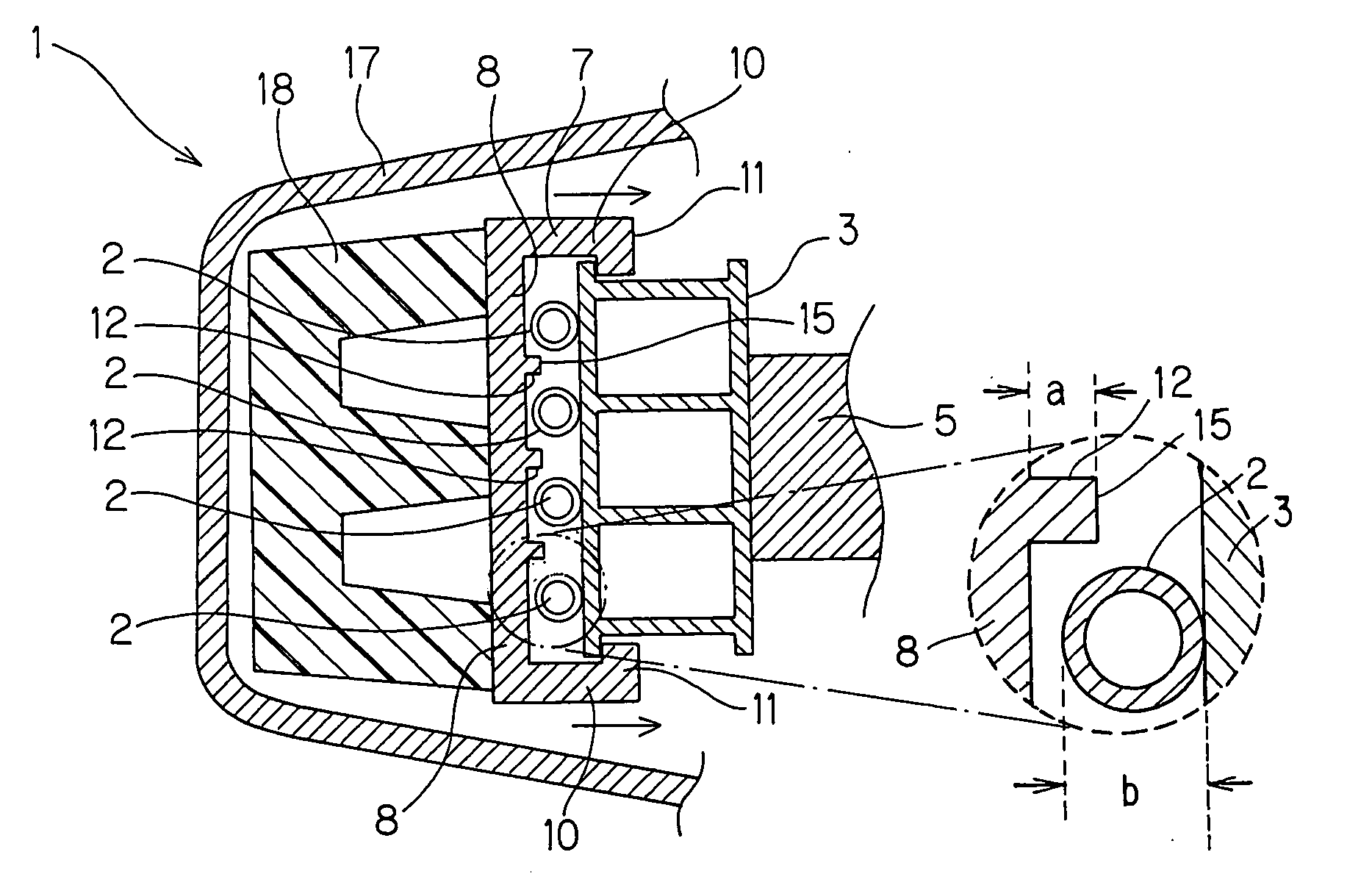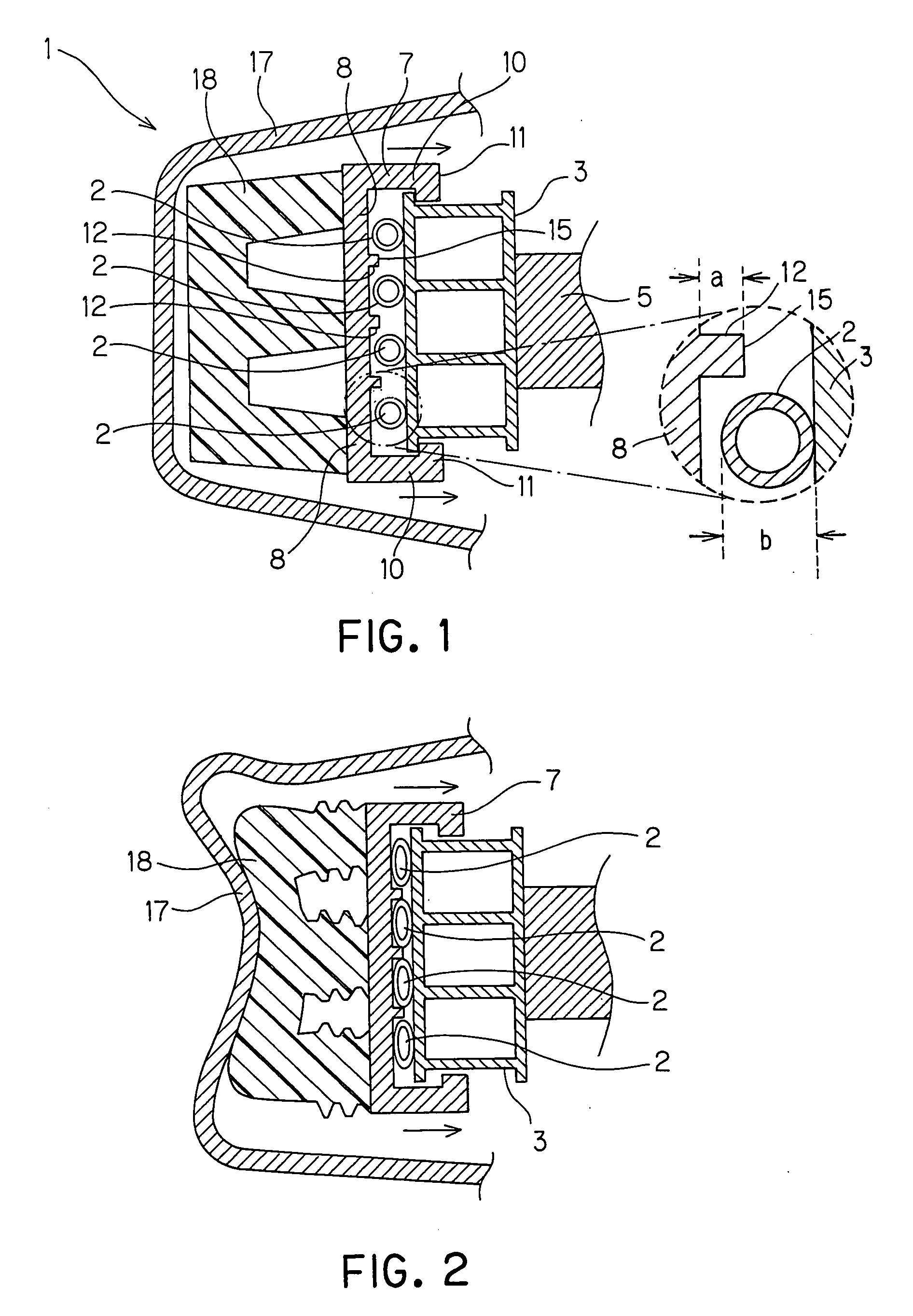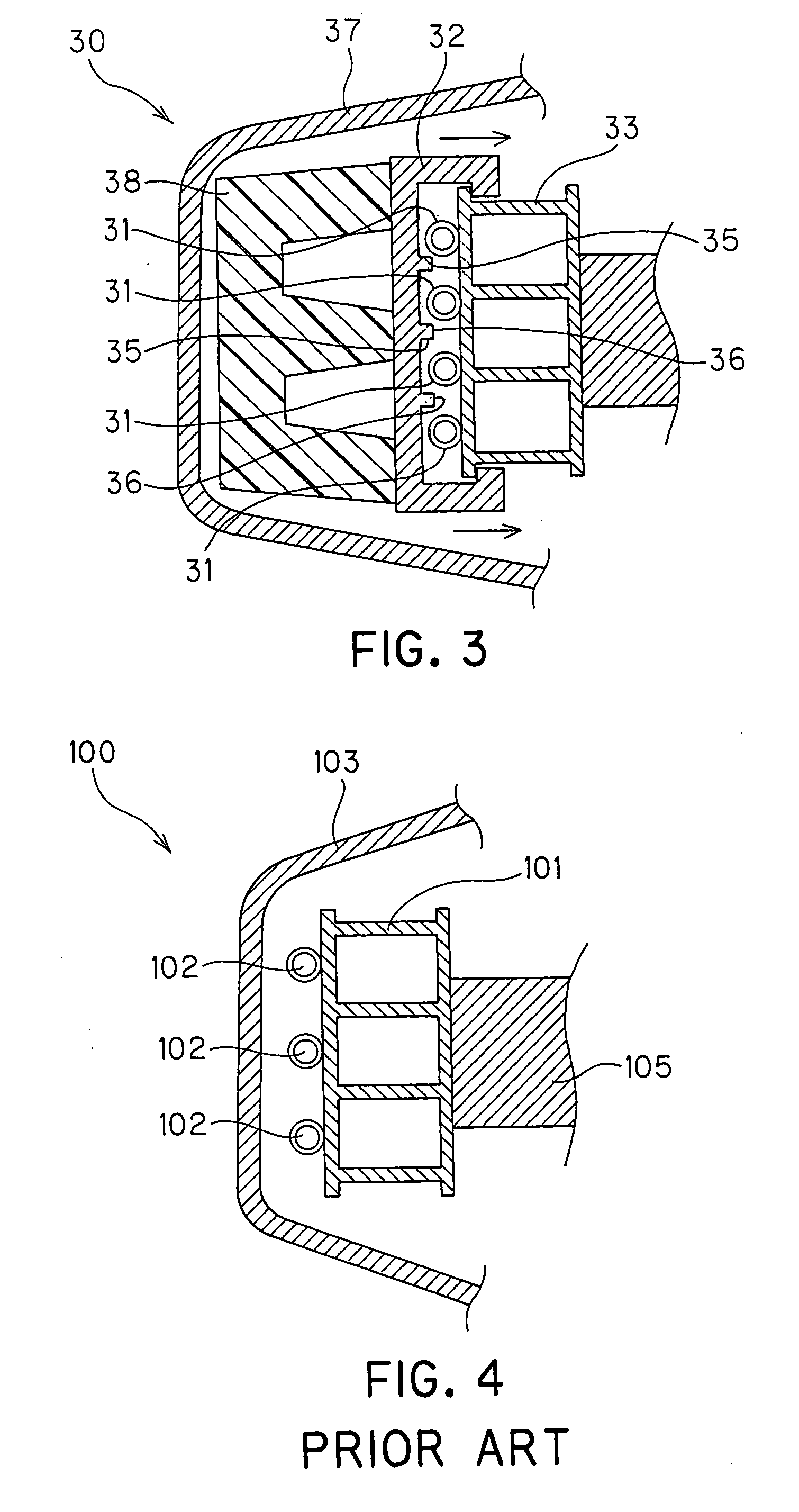Load sensing device for automobiles
a technology for sensing devices and automobiles, applied in the direction of instruments, instruments, force measurement by measuring optical property variation, etc., can solve the problems of not transferring enough load to the load sensor, /b> cannot reliably detect the load applied to the vehicle, and pedestrian collisions with vehicles may be damaged
- Summary
- Abstract
- Description
- Claims
- Application Information
AI Technical Summary
Benefits of technology
Problems solved by technology
Method used
Image
Examples
first embodiment
[0041] In a first embodiment of the present embodiment, the load sensing device 1 uses an optical-fiber sensor as the load sensor. FIG. 1 schematically shows a cross sectional view of the load sensing device in this embodiment. FIG. 2 schematically shows a cross sectional view of the load sensing device which is under an application of a forward load.
[0042] In the load sensing device 1 in this embodiment, the optical-fiber sensor 2 serving as load sensor is secured on the front surface of the bumper reinforcement of the vehicle, the bumper reinforcement serving as an inner member 3 or a first member according to the present invention. The optical-fiber sensor 2 is provided to extend in the lateral direction along the inner member 3, that is, the direction extending from side to side of the inner member 3, and turns back at both the left and right ends to be arranged in the up and down direction. The optical-fiber sensor 2 has one end that connects to a not-shown light-emitting mean...
second embodiment
[0050] Referring to FIG. 3, a second embodiment of the present invention will now be described. In the description of the second embodiment, the similar or identical components to those in the first embodiment will be made reference with the same reference numerals as those in the first embodiment.
[0051] A load sensing device 30 according to the second embodiment is the same as the device 1 shown in the first embodiment, except that the load sensor is provided to attach to the load transfer member. FIG. 3 schematically shows a cross sectional view of the load sensing device 30 employed by this embodiment.
[0052] In the load sensing device 30, an optical-fiber sensor 31 serving as the load sensor is secured on the back surface of a load transfer member 32. The optical-fiber sensor 31 is provided extending in the direction from side to side of the load transfer member 32, and turns back at both the left and right ends to be arranged in the up and down direction. The load sensor 31 ha...
PUM
| Property | Measurement | Unit |
|---|---|---|
| distance | aaaaa | aaaaa |
| height | aaaaa | aaaaa |
| length | aaaaa | aaaaa |
Abstract
Description
Claims
Application Information
 Login to View More
Login to View More - R&D
- Intellectual Property
- Life Sciences
- Materials
- Tech Scout
- Unparalleled Data Quality
- Higher Quality Content
- 60% Fewer Hallucinations
Browse by: Latest US Patents, China's latest patents, Technical Efficacy Thesaurus, Application Domain, Technology Topic, Popular Technical Reports.
© 2025 PatSnap. All rights reserved.Legal|Privacy policy|Modern Slavery Act Transparency Statement|Sitemap|About US| Contact US: help@patsnap.com



